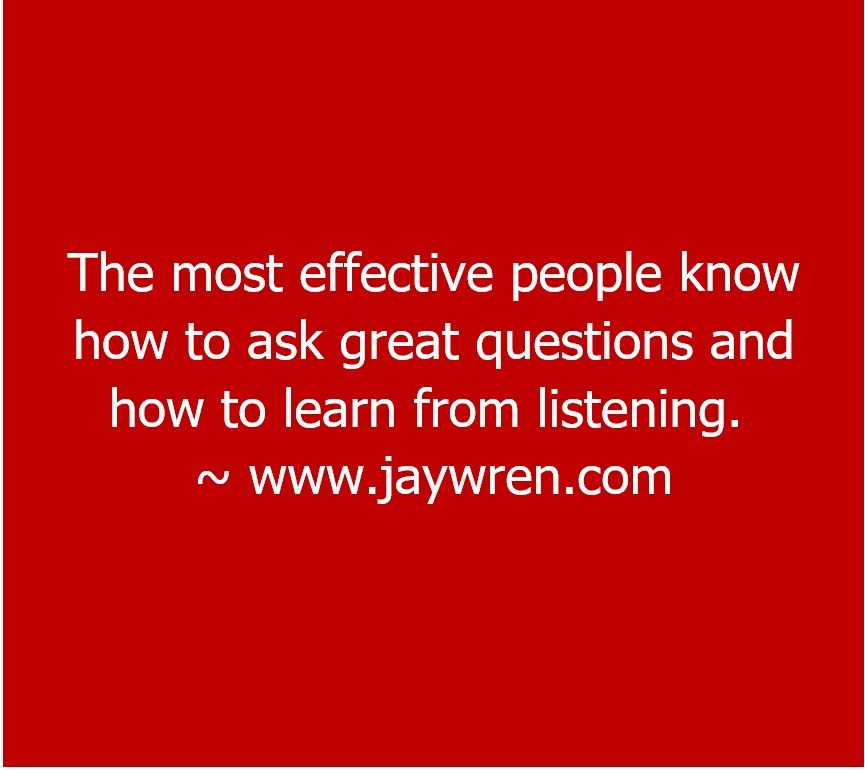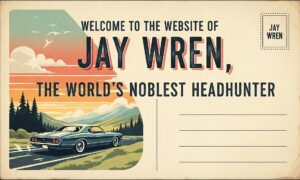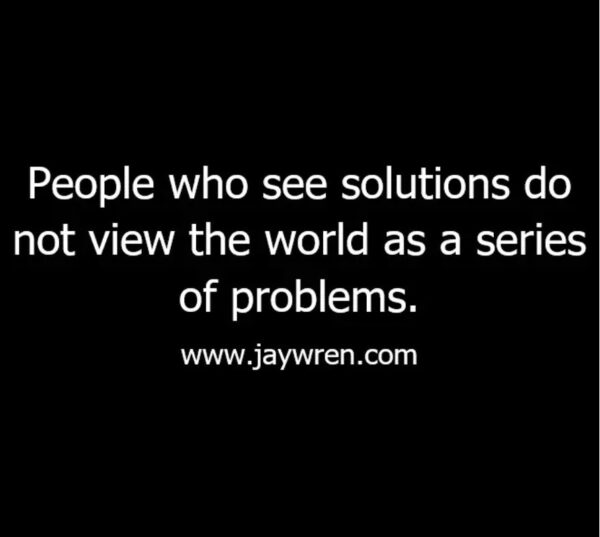The most effective people know how to ask great questions and how to learn from listening. ~ www.jaywren.com
Listening: What is the role of asking questions and listening in creating cooperation? Here are examples of how great questions lead you to getting what you want when you understand what other people need.
In the Workplace, Listening Creates Cooperation
Listening and asking questions helps leaders and the people they lead create greater communications. Furthermore, this understanding creates greater cooperation in the workplace.
Great Questions Create Great Responses
Learning to ask questions, especially great questions, leads to better understanding. The most effective people have the patience to ask thoughtful questions about what other people need.
Retail Example
In a retail-selling situation, retail clerks create sales when they help customers find what they want. Using the following example, you can develop these skills into creating cooperation in most situations.
The opening question in retail is “How may I help you?”
The shopper says, “I would like to try on a pair of shoes.”
“Do you have a particular style in mind?”
“Yes, I would like to try this brand of walking shoes?”
“What size would you like to try?”
“Size 8.”
The clerk brings out four pairs.
You try them on and select a pair.
The clerk asks, “May I show you some other shoes?”
“No.”
“Would you like to try some inserts or socks with those shoes. Our socks are on sale today for $3.00 a pair.”
“I am not interested in the inserts, but I will take four pairs of the socks that are on sale.”
The clerk asks you if you would like to put your payment on the store credit card.
You say, “I don’t have one.”
The clerk asks, “May I sign you up today? You save 20% on all your purchases.”
Now, you accept the offer and pay for the shoes and socks on the store credit card.
The Results of Great Listening
You went to the store to buy a pair of shoes and feel as though you just got the bargains of your life. With the help of the clerk, you got the socks on sale and saved an extra 20% on all your purchases.
So, how did the clerk’s listening skills help you as the customer and the retailer?
- The store sold you the shoes that you needed.
- Additionally, you spent $12.00 on socks.
- The store increased the amount you spent during your visit.
- When you signed up for the credit card, the store collected marketing data about you and your shopping patterns.
- Furthermore, the store sold you on establishing a line of credit for which they may make more money in interest charges.
Listening and Managers
Great managers use the same process for finding solutions. These managers ask questions and learn from their employees. At the beginning of a meeting, a manager might ask the team members, “how might we cut our costs.”
The team members begin to answer the question.
Perhaps on a flip chart or a marking board, a manager or an assistant records the responses.
As the meeting proceeds, enough information goes on the list of ideas to start a process.
The manager says, “Today, we have made a good start. I will send you an email with a list of the things that we discussed today. When you receive the email, you can begin to prepare for the meeting tomorrow. You write your answers to these questions.
- Which of these ideas is practical for what we do as a company?
- On what schedule can we carry out each of these ideas?
- What are the risks to our business if we carry out these changes?
- What are the gains to our business if we carry out these changes?”
So, begins the process through which great managers direct teams. The same process would work for any department: selling, marketing, product design, finance, human resources, and so on across a company and so on throughout all of its functions. The process is simply a series of questions that lead to solutions.






